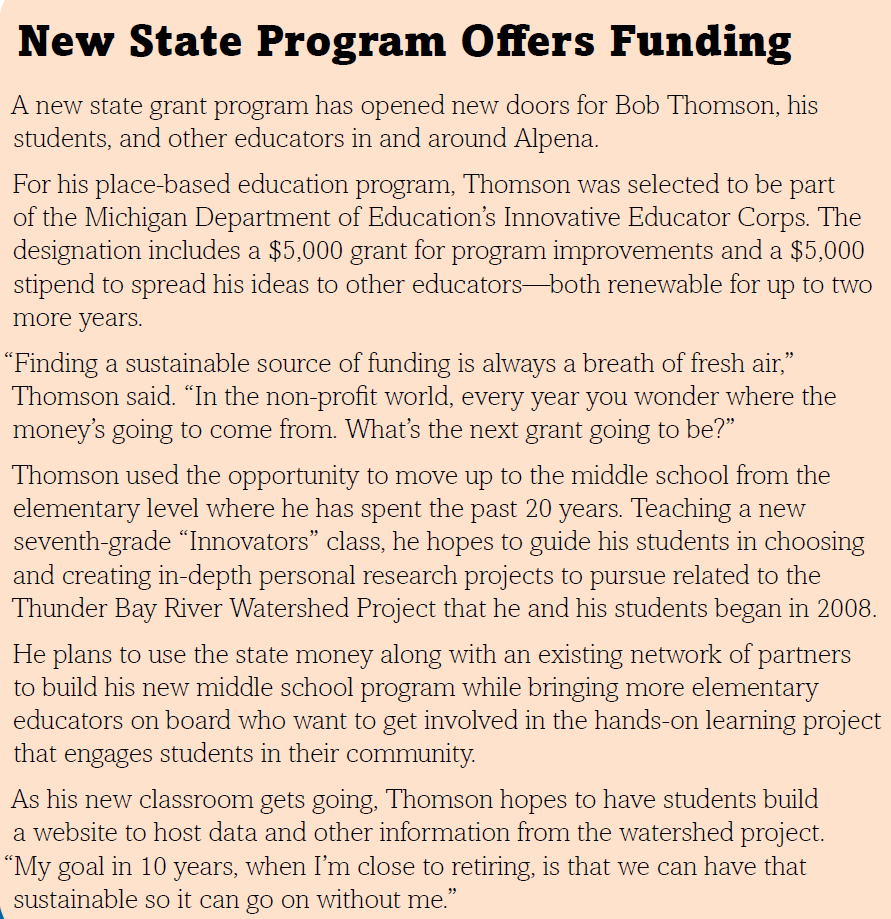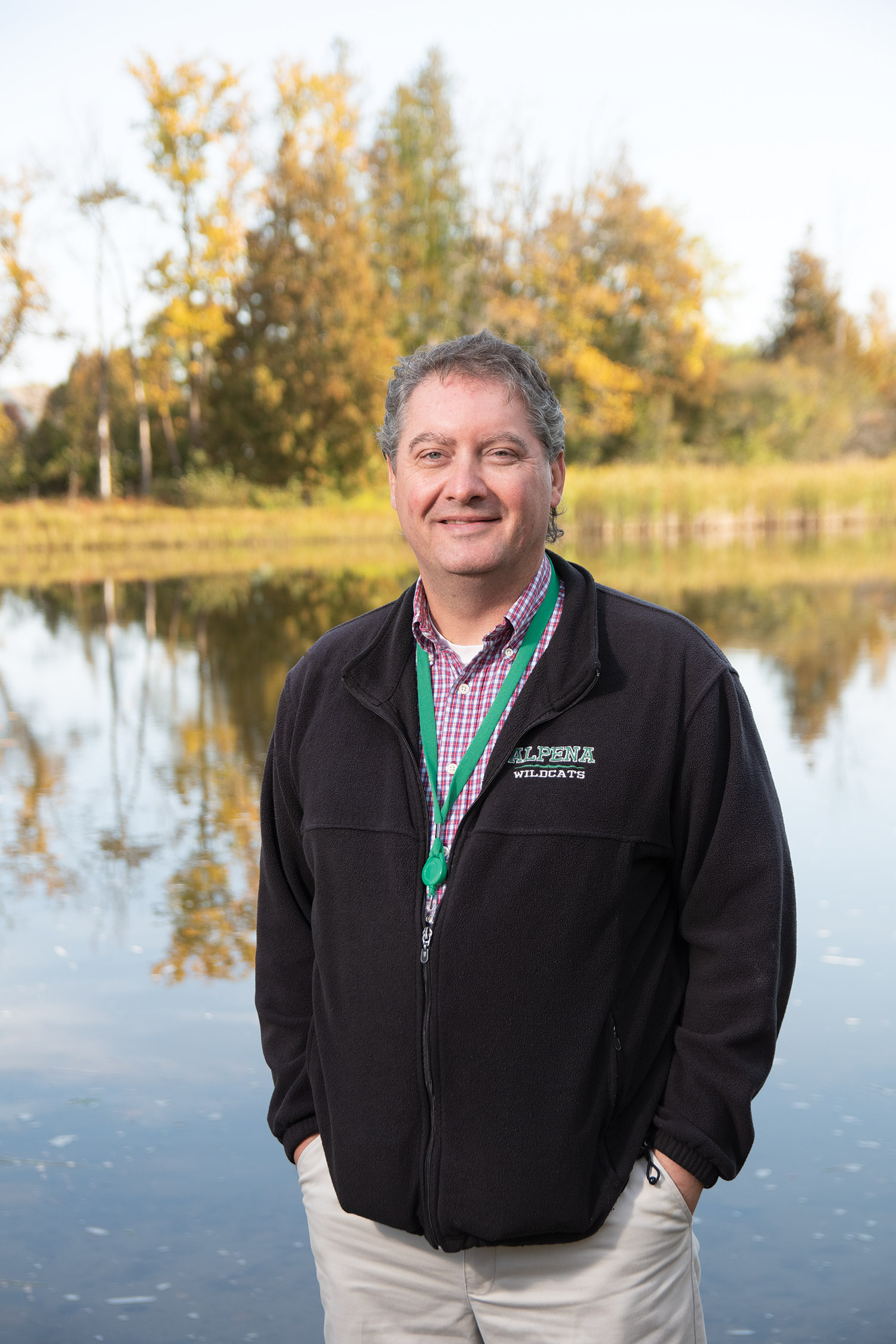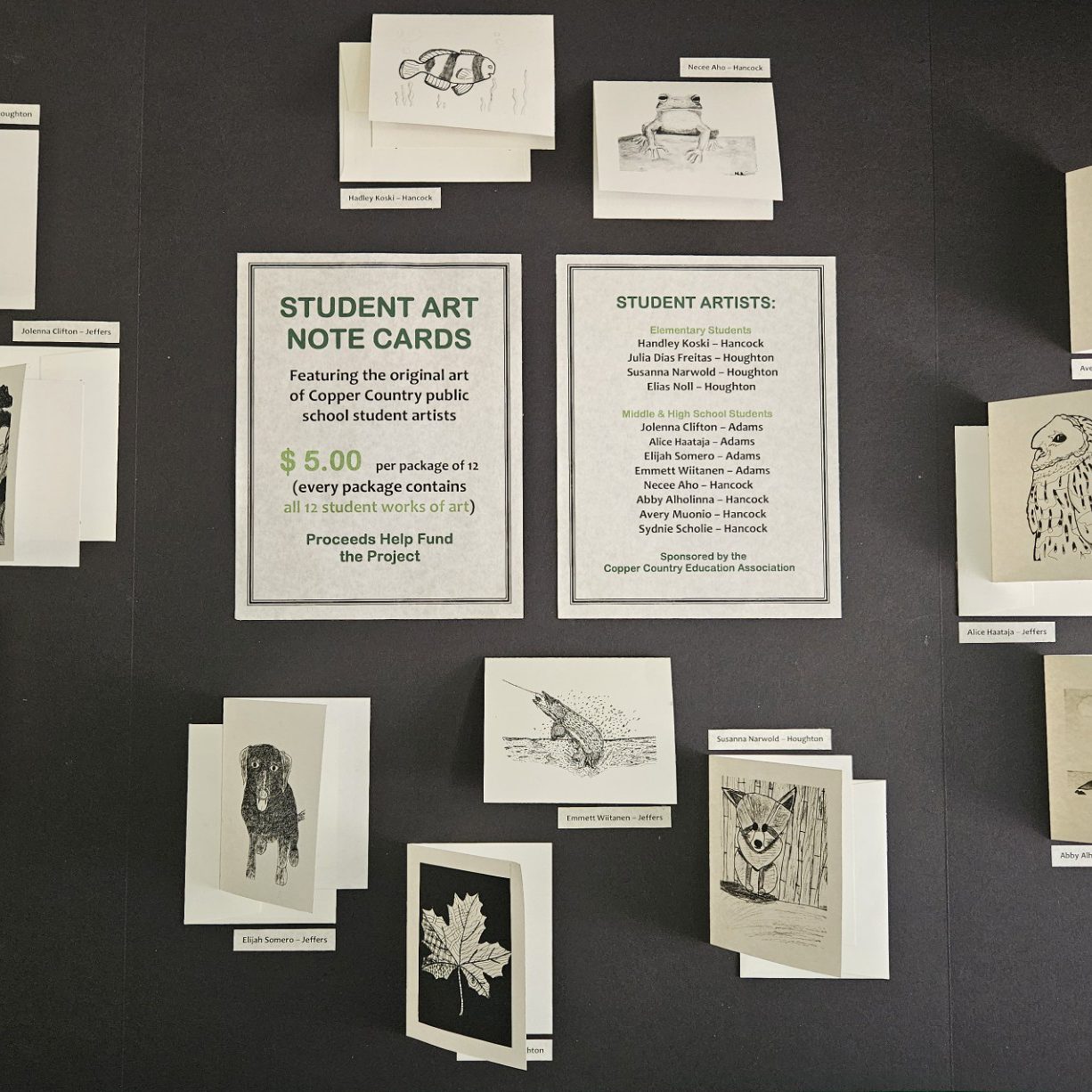Innovation: Place-Based Education One Chapter at a Time
By Brenda Ortega
MEA Voice Editor
When MEA member Bob Thomson goes to a conference to present data from his “place-based” teaching approach in Alpena Community Schools, educators in attendance tend to doubt they could follow in his footsteps.
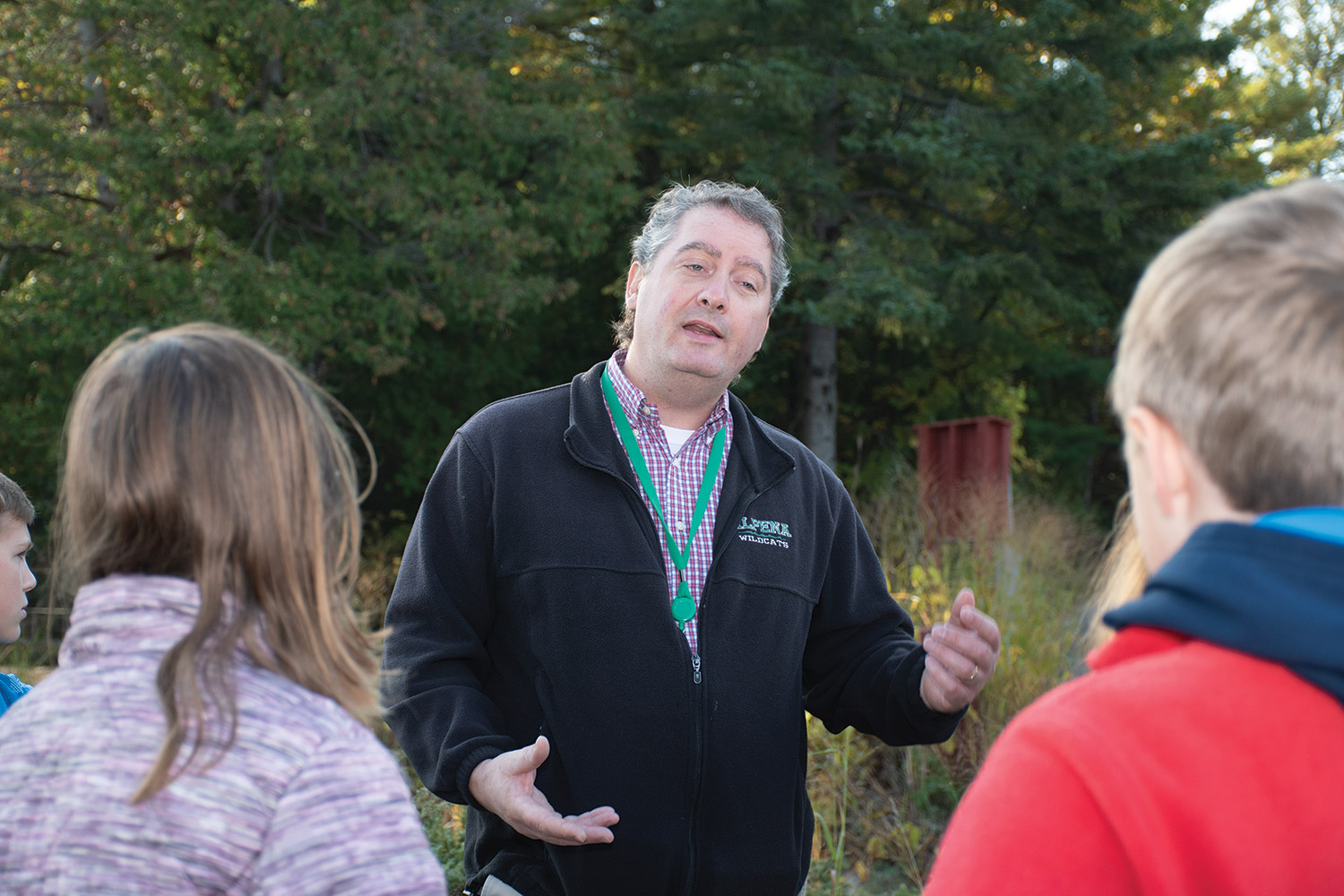
“If all I do is share the size of this, what it looks like and all the partners involved, people say ‘There’s no way I can do that.’ But they don’t realize this project didn’t just get born. It was a slow development over time.”
Instead, Thomson likes to talk about the Thunder Bay River Watershed Project (TBRWP) that he and his fifth-grade students launched in 2008 like it’s a novel he’s been writing for the past 20 years. The story has progressed step by step and chapter by chapter.
That original group of fifth graders has graduated, but their legacy today encompasses a range of Alpena students from elementary school to seniors in high school contributing to research on the health of the local watershed and ways to protect it.
Students pursue their curiosity by conducting experiments, collecting and comparing data, proposing solutions to problems they encounter, communicating findings, and posing additional questions that arise from their work.
“The idea behind teaching science based on place is to help kids build a love of their community and an understanding of our watershed, and give them a sense of ownership and stewardship,” Thomson said.
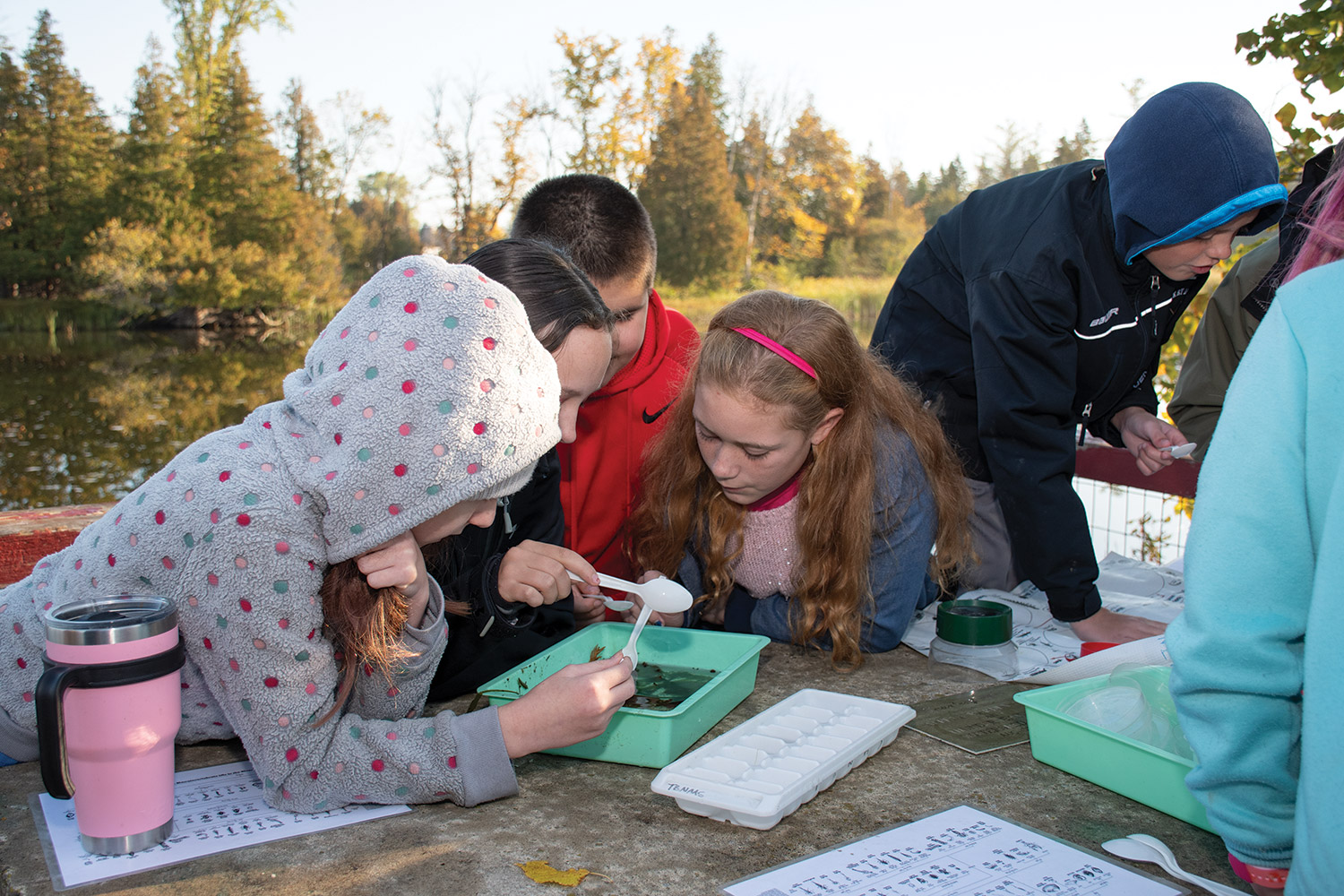 For example, last year his students were interested in learning more about brown trout, the spotted fish celebrated in a 10-day festival in Alpena every summer for the last 45 years. Because of Lake Huron’s changing ecology, brown trout have been disappearing.
For example, last year his students were interested in learning more about brown trout, the spotted fish celebrated in a 10-day festival in Alpena every summer for the last 45 years. Because of Lake Huron’s changing ecology, brown trout have been disappearing.
Thomson’s students raised trout from eggs in the classroom and released their fry onto a restored reef habitat in Lake Huron’s Thunder Bay. They used a student-built underwater robot equipped with a student-engineered device that dropped the vulnerable baby fish at the lake’s bottom to reduce predation.
“It gets them thinking—so there’s a big river that runs through our county. What’s in that river? How do the Great Lakes affect us? How do the fisheries affect us? Because that is a huge economic pull for our community, and by understanding brown trout we can connect it all together.”
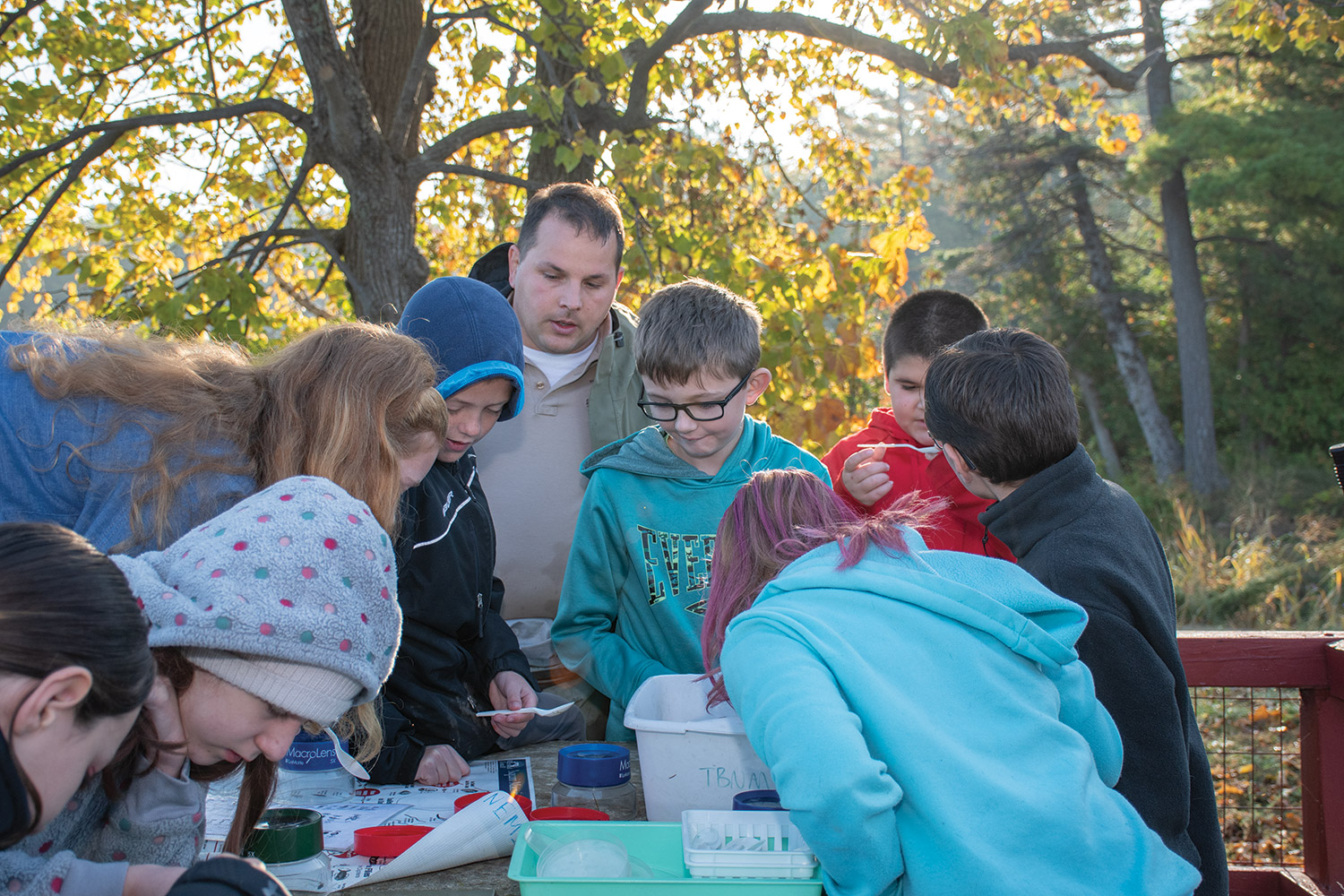 Prologue
Prologue
Once upon a time, Thomson grew up in Alpena in a family he describes as “economically disadvantaged.” He was a C student who perceived few opportunities and was not prepared for post-secondary education, he says.
An interest in robotics drew him to join the U.S. Navy after graduation. “I was always curious and loved to tinker,” he said. “I loved to build things and figure out how things worked, and the Navy offered that opportunity.”
Thomson served for eight years, traveled the world, learned lots of different jobs and got to focus on electronics and robotics while working on a large weapon system. After leaving the Navy, he had offers to continue working in robotics but turned them down.
He’d found while volunteer-tutoring as a sailor in various ports of call that he enjoyed working with kids. He earned an Associate degree from Alpena Community College, a Bachelor’s and K-8 certification from Saginaw Valley State University, and a Master’s from Marygrove College.
He began his teaching career in 1999.
Chapter One
Shipwreck Alley’s Lure
This story begins with the designation of the Thunder Bay National Marine Sanctuary.
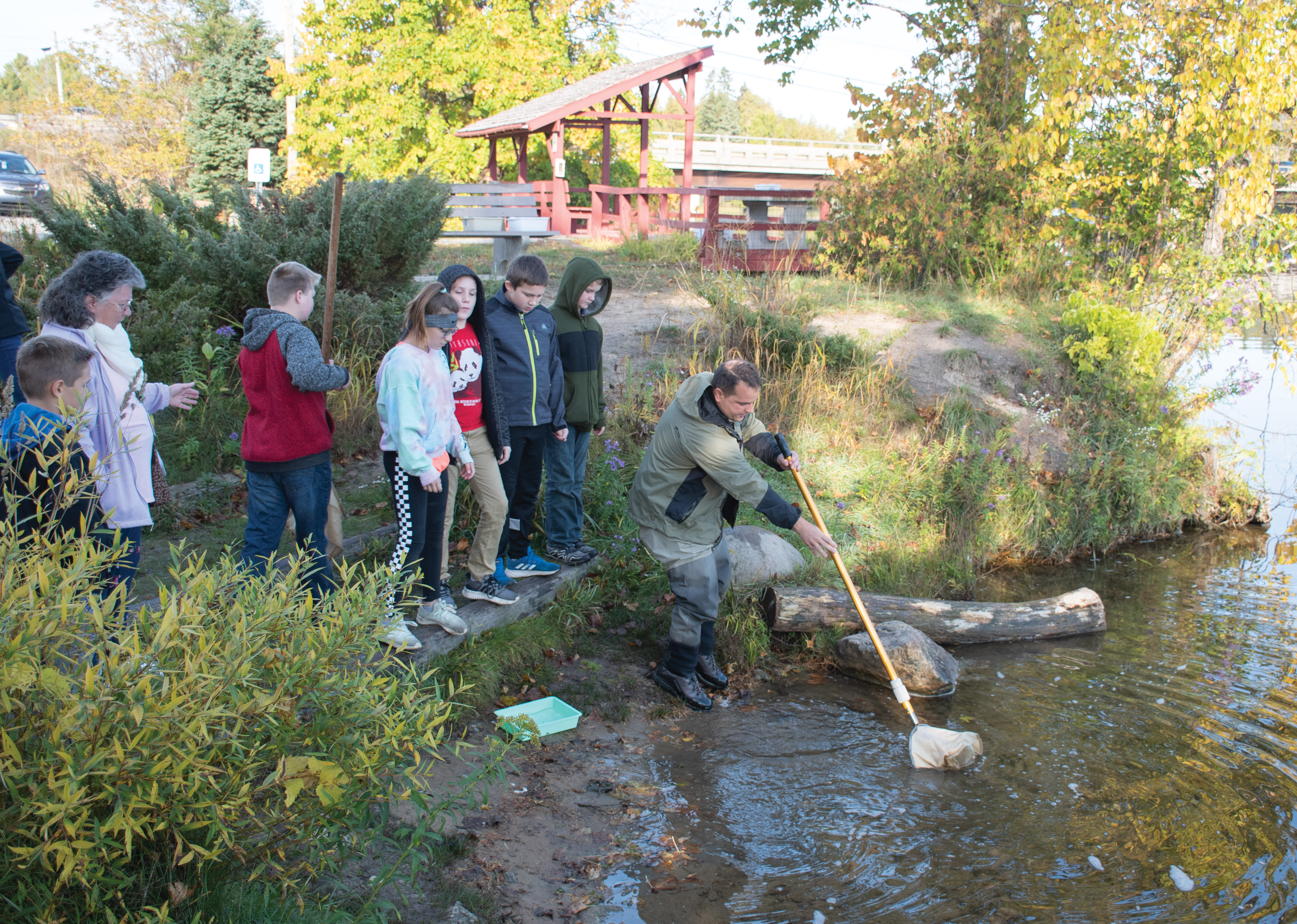 The 4,300-square-mile area in northwestern Lake Huron lies next to a treacherous stretch of water known as “Shipwreck Alley,” where more than 200 vessels succumbed to gales, fog banks, and rocky shoals throughout maritime history.
The 4,300-square-mile area in northwestern Lake Huron lies next to a treacherous stretch of water known as “Shipwreck Alley,” where more than 200 vessels succumbed to gales, fog banks, and rocky shoals throughout maritime history.
Within the sanctuary’s boundaries, nearly 100 shipwrecks have been preserved by the cold fresh water of Lake Huron and now protected by its designation as a marine sanctuary, jointly managed by the National Oceanic and Atmospheric Administration (NOAA) and the Michigan Department of Natural Resources (DNR).
The sanctuary designation came in 2000, along with a NOAA visitor center which houses a huge dive tank and other educational resources. “Once that started going up, I started kind of poking around and trying to find ways I could get my classroom involved with them,” Thomson said.
He became one of the first teacher-partners affiliated with NOAA and the sanctuary. He partnered to build a makerspace at the facility, and his students began competing in annual Great Lakes Regional ROV competitions to build underwater Remotely Operated Vehicles (ROVs).
Over the years, Thomson’s students have advanced to the World Championships developed by the MATE Center (Marine Advanced Technology in Education) ROV competition. And the robotics program has grown to include an afterschool program for middle and high schoolers.
In addition to building robots for competition, the older students can be called on to help tackle more sophisticated challenges than the elementary kids can solve. Over time they have become like an “engineering design firm” supplying a reliable commercial-grade ROV, along with custom products as needed.
In that way, ROVs have become a foundational element of Thomson’s ongoing Thunder Bay River Watershed Project.
Chapter Two
The Robots Have Mussels
It was the pursuit of grant money for robotics equipment that first brought Thomson into contact with the many partnering organizations that have allowed him to expand and sustain his place-based education efforts across more than a dozen years and counting.
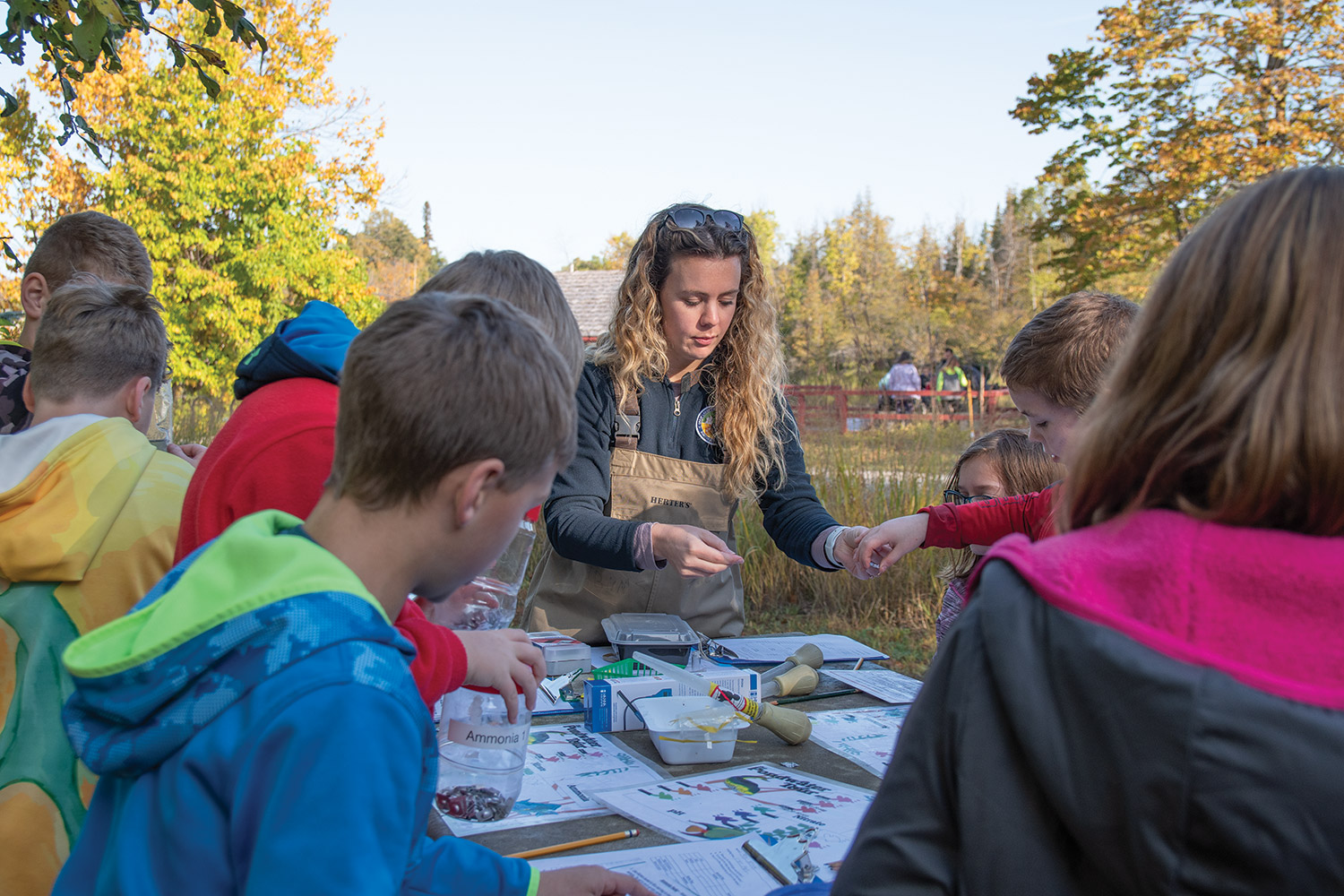 Around the same time that he was getting involved with NOAA and ROVs, the Great Lakes Stewardship Initiative was being formed to include several regional hubs across Michigan. Its goal: fostering place-based education through grant-making and partnering.
Around the same time that he was getting involved with NOAA and ROVs, the Great Lakes Stewardship Initiative was being formed to include several regional hubs across Michigan. Its goal: fostering place-based education through grant-making and partnering.
When he learned about it, Thomson joined the leadership team for the northeast hub, “and you know how a network grows. One thing leads to another, and the network gets bigger, and I just grew right along with it.”
With the help of his partners, he and his students began the Thunder Bay River Watershed Project a dozen years ago to focus on understanding the health of the watershed and determine how invasive species disrupt the natural balance of an ecosystem.
Since then students have learned how to collect, test, and record water samples from specific sites along the river to observe changes over time. From all of that information, they develop questions to study in more depth.
Soon after the watershed project began, the youngsters wanted to learn how invasive zebra and quagga mussels had changed the ecology of the Thunder Bay River and the Great Lakes.
The students’ first self-driven project involved wading into the river to turn over rocks in search of zebra mussels with the U.S. Fish and Wildlife Service. Another group of students extended that work the next year by launching a student-built ROV from the NOAA research vessel Storm to pull creatures from a shipwreck at a depth of 30 feet.
Eventually their work involved outreach and education to the community. “There’s so much we can talk about, because just about every year there’s a new chapter that’s written depending on how the kids shift their thinking,” Thomson said.
Grant money allowed Thomson to involve other teachers in his students’ watershed initiative through fall and spring water sampling at specific sites. The information allows students to see changes over time along the Thunder Bay River that feeds into Lake Huron.
“You just keep collecting the same data from the same sites and you watch,” he said. “See what happens. And from the data, you pull questions and come up with stuff to research.”
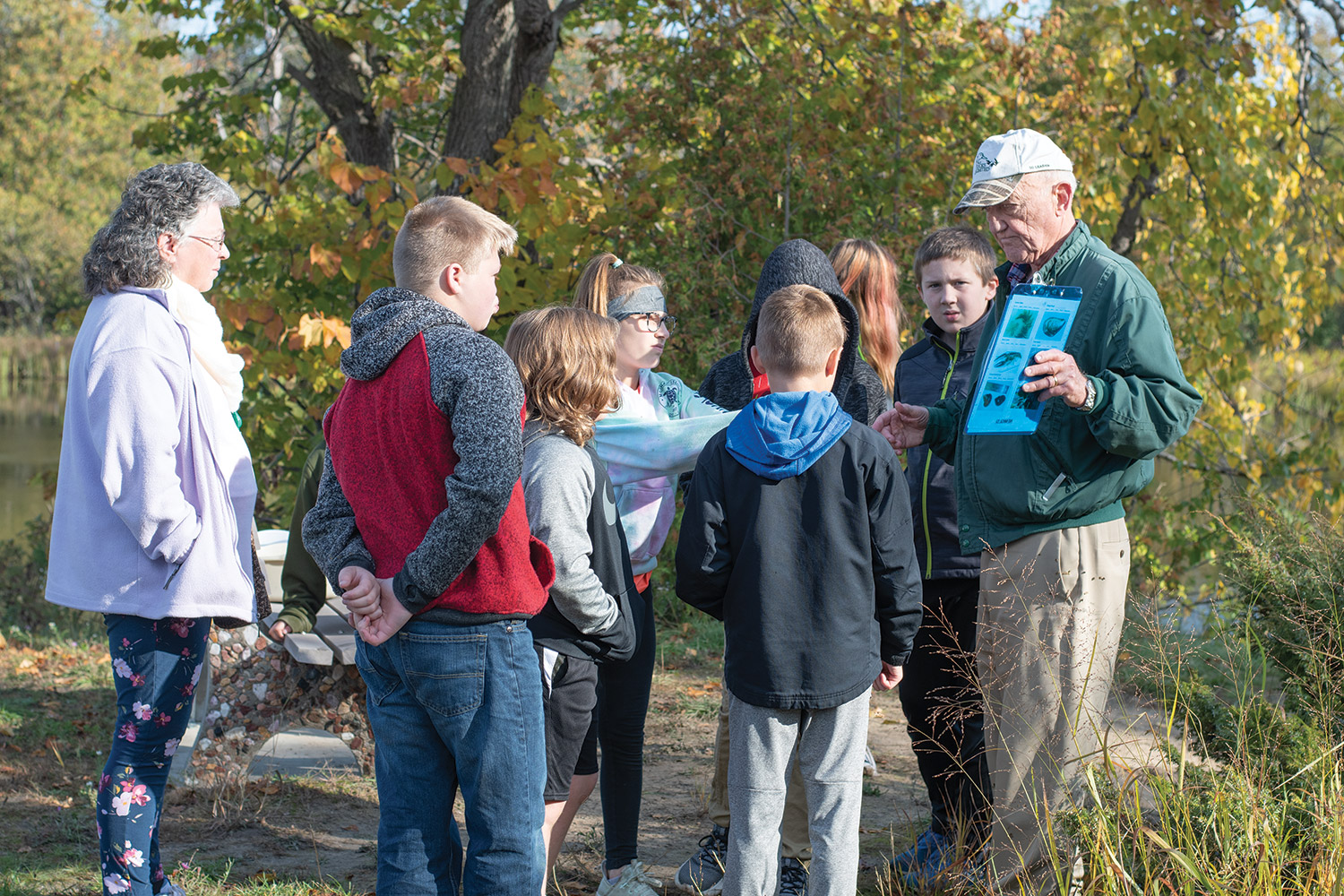 Involvement by other educators has waxed and waned as money to pay for everyone’s transportation costs has alternately flowed and then dried up, Thomson said. At its height, about 25 teachers from four counties had students helping to collect data for the watershed project.
Involvement by other educators has waxed and waned as money to pay for everyone’s transportation costs has alternately flowed and then dried up, Thomson said. At its height, about 25 teachers from four counties had students helping to collect data for the watershed project.
MEA member Jennifer McInerney has been working with Thomson for four years. Once she saw kids’ eyes light up learning science through hands-on activities, she was hooked, she says.
“I go to all the conferences, the summer workshops; Bob and I are partners in crime,” McInerney said as her students collected water samples during a fall visit to their assigned monitoring site at Alpena’s Sytek Park.
She watched as a volunteer from the U.S. Fish and Wildlife Service helped the students sort invertebrates from the river water into plastic ice cube trays for counting. “What I’ve learned is that there are a lot of community partners out there who want to help and be involved in the kids’ education, but you have to go to them. That’s what Bob does.”
It’s hard to describe all of Thomson’s multi-faceted work, but his approach in general is to turn the local community into a classroom, said Meag Schwartz, network coordinator with the Northeast Michigan Great Lakes Stewardship Initiative.
Schwartz was helping students from McInerney’s class check river samples for dissolved oxygen and pH balance, among other water quality tests. “He is creative and really good at using local resources and tying that into the curriculum and aligning it with standards,” she said.
Chapter Three
Researching the Raiders
For examples of student-initiated research efforts, two different projects from different years have explored “raiders” of the river.
The “Rusty Raiders” project several years back was a finalist in Disney’s Planet Challenge—a project-based environmental science competition for fourth through sixth graders—after students learned about the destructive spread of rusty crayfish to waterways in Michigan and other states.
With the help of various partnering agencies, students gathered rusty crayfish from the river for a population survey; studied how they reduce aquatic plants, invertebrates and some fish populations; and developed solutions to the problem.
The students’ three-year plan involved public information campaigns to encourage local residents to practice catch and release protocol when fishing for small mouth bass and eventually reintroducing native crayfish.
Students developed a Lake Huron’s “Most Wanted” profile for the rusty crayfish to be added to Michigan Sea Grant’s invasive species poster collection. “I got my whole writing curriculum off of those crayfish that year,” Thomson said.
More recently, students became interested in the proliferation of plastics, microplastics and plastic fibers polluting water. After a speaker talked with the class about the issue, the students were collecting water and a boy asked, “How do we know if there’s plastic in the water?”
And the River Raiders project was born. Again with the help of partners in the network, over two years students researched and prototyped devices to test for plastics. They learned about protocols that NOAA was using to test for microplastics in sand where it tends to collect.
The high school robotics team designed an arm that could attach to the ROV to scoop sand from the bottom of the river. The younger students created a device using dish soap and a coffee filter that allowed them to count the plastics that appear as tiny wisps in the tubes of filtered water.
A state DNR mathematician taught them the formula for estimating the amount of plastic coming from the river mouth based on the sampling, “and we estimated the equivalent of about 26,000 water bottles a year is washing out the end of Thunder Bay River,” Thomson said. “Mostly it’s fibers from clothes. It’s in everything.”
Epilogue
Thomson gives credit for his success to his wife, Katie, an “incredible” elementary educator in Alpena who taught him how to engage kids. His children have also gotten into the act. Youngest daughter Lydia is a sixth grader who enjoys tinkering around with science and robots.
Years ago, his oldest daughter Elizabeth was responsible for evolving the ROV program upward when she moved on to middle school and didn’t want to give up robotics. She started an afterschool club through MSU Extension 4H and kept it going through high school.
Now a sophomore at MSU, Elizabeth is starting a university-level ROV team, and she recently changed her major from engineering to education to follow in her parents’ footsteps.
Thomson didn’t set out to build a network or create the watershed project spanning years. It formed as he asked questions, met people, and took advantage of opportunities. “I’m not the smartest person in the room; I’m the best resourcer in the room, which is an art in itself,” he said.
He advises other educators interested in place-based teaching and learning to start small and follow where student interest leads. “Pick one project and go. That will lead to the next thing and the next thing. Once you get kids curious, you never run out of questions.”
